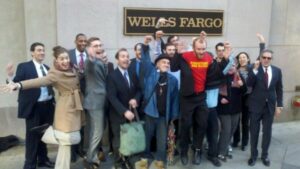
This video interview with Israel social movement organizers Stav Shaffir and Yonatan Levi in March covers the issues and main happenings of last year’s uprising. Among the 2011 spring and occupy movements, Israel’s uprising had the highest participation per capita of any country.
The Israel social justice revolution underscores the universality of class and power abuses globally. As in the US’ young and corrupt democracy, Israel’s diverse society is plagued by racism, militarism, and extreme sectarianism in a paralysis that a diverse and massive social movement aims to break.
Israel’s uprising last summer waned when the Jewish high holidays arrived in the fall. In June 2012 when activists reestablished their tent camp, they were met by brutal police force. June 24, 2012 an estimated 7,000 protesters rioted against police brutality on the streets of Tel Aviv – an action that was covered in international news sources, but not included in #Occupy graphics describing the revolutionary uprisings which took place that same week around the word.
The Nation‘s analysis of Israeli mainstream media news coverage of the protest against police brutality noted, “Ynet News painted a much more violent image of the protest, choosing to focus on vandalization incidents involving shattered windows and protesters charging into banks as part of what the outlet dramatically described as ‘socioeconomic riots.’”
Gaining a deeper understanding by learning about the demands and dynamics of Israel’s protests and engaging with Israel’s revolution through social media like twitter (#J14Eng) will open greater opportunities to strengthen our global solidarity for justice.









